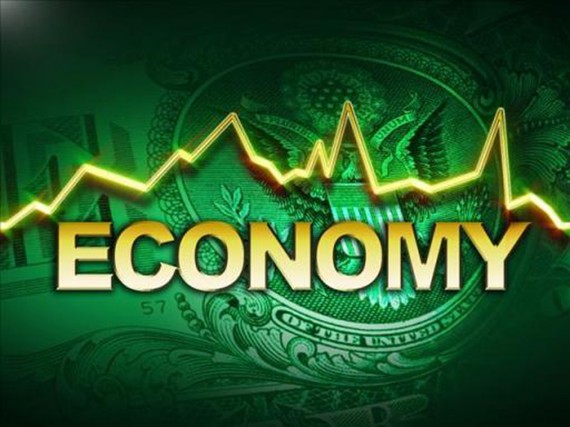
It’s become a dreary ritual: Every six months, the International Monetary Fund (IMF) forecasts the global economy — and cuts its previous forecast. Despite an army of economists, all of its forecasts since 2011 have been too optimistic. The latest, released last week, shaved 0.4 percentage points off the growth estimate made in April. The world economy is now expected to expand only 3.3 percent in 2014, down from a respectable 5.4 percent in 2010. The feeble growth raises the specter of a global recession.
IMF Managing Director Christine Lagarde — her agency makes loans to financially troubled countries — calls the outlook “the new mediocre.” Maybe worse. In August, manufacturing output fell in China, Japan, South Korea and much of Europe, report economists at JPMorgan Chase. A 4.3 percent month-to-month drop in Germany was especially ominous. Despite problems, the United States is “the sole major economy still showing signs of strength,” says Cornell University economist Eswar Prasad. But the U.S. recovery could founder on weakness abroad, via lower U.S. exports and foreign profits. About 30 percent of U.S. profits are earned overseas.
All of this has shaken global stock markets, which swung wildly last week. The turbulence poses two questions. Why does the IMF forecast so poorly? And more important: Why is the world economy so weak?
Part of the faulty forecasting, I suspect, reflects an (unavoidable) optimistic bias. You can’t expect an international agency, responsible to its 188 member countries, to become a citadel of gloom. It can’t ignore obvious facts, but it will give them the most plausible favorable twist.
The IMF’s own post-mortems of its forecasting corroborate this. After the financial crisis, it was widely believed that strong growth in “emerging market” countries — China, Brazil, India and others — would limit the economic damage. Their appetite for raw materials and sophisticated imports (aircraft, instruments) would support trade and investment. The IMF embraced this theory, which briefly seemed to work. Then many emerging markets suffered setbacks that the fund only belatedly recognized. Its overestimates of growth were concentrated in emerging markets, studies found.
But this isn’t the whole story, because it doesn’t explain why global growth is so weak. It just apportions the weakness among various countries. The deeper causes of sluggishness lie, I think, in the special circumstances of this recovery, which is unlike any other since World War II and involves three pervasive problems that foster pessimism and discourage spending.
One is the hangover from the 2008-2009 financial crisis. Sobered and scared, people and businesses delay consumption and investment. To prepare for the next crisis, they reduce debts (“deleverage”) and increase savings. Firms hoard profits. These may be prudent behaviors for individuals and companies, but when practiced by the multitudes, they subtract from economic activity.
Another problem is the legacy of global trade imbalances in the 1990s and early 2000s, when China and some other countries ran huge surpluses and the United States and some others ran huge deficits. This boosted growth for the exporters and their raw material and component suppliers — Australia, Brazil, South Korea and others. But this system depended on the voracious spending of Americans and Europeans. When the spending declined, the export bubble burst.
The third problem is the cost of maturing welfare states. The United States, Europe and Japan (about two-fifths of the global economy) face comparable problems. Their populations are aging. Their governments are committed to paying costly retiree benefits, and these same governments are already running sizable budget deficits. Curbing deficits — necessary for some countries to maintain financial confidence — means cutting spending or raising taxes.
All of these problems involve wrenching adjustments. Each affects countries differently. But all have a similar economic effect: They reduce demand. Any one of them would impose a formidable drag on national economies. The fact that all are operating simultaneously and reinforcing each other has forged them into a powerful international force that has, so far, offset many of the policies (low interest rates, budget deficits) intended to strengthen economic growth.
There are renewed calls for spending on infrastructure — roads, bridges, ports, airports — to overcome the world economy’s lethargy. There are pros and cons to this. But a few numbers show that, even if embraced, infrastructure spending would be no panacea. Suppose a $1 trillion package of projects could be immediately identified, financed, started and finished in two years. In 2013, the IMF reckons the world economy’s output was about $75 trillion. Over two years, the $1 trillion would add slightly more than one-half of 1 percent to global output annually.
We’re witnessing a historic break from the past. I think the IMF forecasters deserve some sympathy. They’re dealing with a global economy that strains our intellectual understanding and is outside their personal experience. We don’t know what we don’t know.
No comments:
Post a Comment